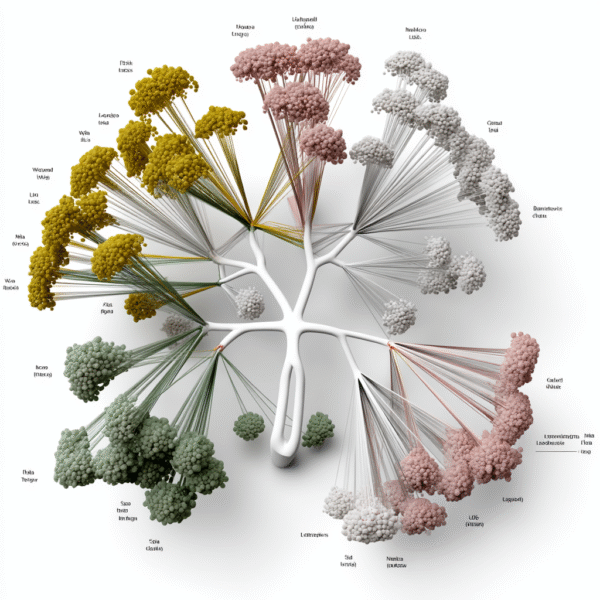
https://itinai.com/revolutionizing-medical-ai-googles-g-amie-enhances-accountability-for-clinicians/
Understanding the Target Audience
The g-AMIE system is designed primarily for healthcare professionals, including licensed clinicians, nurse practitioners (NPs), physician assistants (PAs), and healthcare administrators. Their primary concerns revolve around the need for efficient and accurate diagnostic processes while ensuring patient safety and adhering to regulatory standards. Goals for these professionals include improving patient outcomes, streamlining workflows, and enhancing collaboration between AI systems and human clinicians. They tend to prefer clear, concise, and data-driven content that focuses on practical applications and tangible outcomes.
Overview of the g-AMIE System Design
Advancements in large language model (LLM)-powered diagnostic AI agents have led to the creation of systems capable of engaging in high-quality clinical dialogue and differential diagnosis. However, individual diagnoses and treatment recommendations necessitate oversight from licensed clinicians. Traditional healthcare practices often involve a hierarchical oversight structure, where experienced physicians review and authorize the diagnostic proposals made by APPs. This requirement highlights the need for medical AI systems like g-AMIE to align with established safety protocols.
System Design: Guardrailed Diagnostic AI with Asynchronous Oversight
A collaborative effort by Google DeepMind, Google Research, and Harvard Medical School produced the g-AMIE multi-agent architecture. This system, built on Gemini 2.0 Flash and the Articulate Medical Intelligence Explorer (AMIE), includes several noteworthy features:
- Intake with Guardrails: The AI conducts history-taking dialogues, documents symptoms, and summarizes clinical contexts without providing any direct diagnosis or management recommendations to the patient. A specialized “guardrail agent” monitors responses to ensure compliance, filtering out potential medical advice.
- SOAP Note Generation: Following the intake, a dedicated agent synthesizes a structured clinical summary in SOAP format (Subjective, Objective, Assessment, Plan), employing chain-of-thought reasoning to ensure accuracy and consistency.
- Clinician Cockpit: Licensed physicians can review, edit, and authorize the AI-generated SOAP note and communication through an interactive cockpit interface, which was developed based on interviews with clinicians. This allows physicians to make detailed edits and decide whether to accept the AI’s recommendations.
This design allows asynchronous review by physicians, significantly increasing scalability when compared to traditional models requiring “live” supervision.
Evaluation: Rigorous OSCE Study and Auto-Rater Validation
To evaluate the g-AMIE system, researchers conducted a randomized, blinded virtual Objective Structured Clinical Examination (OSCE). This study involved:
- Comparison Groups: g-AMIE was assessed against control groups consisting of early-career primary care providers (g-PCPs) and a mixed group of NP/PAs (g-NP/PA), all operating under similar guardrails, with oversight from senior PCPs (o-PCPs).
- Scenario Packs: Sixty clinical scenarios were developed, calibrated against UK guidance and designed for effective assessment.
- Rubrics and Metrics: The evaluation measured various factors, including the quality of dialogue, the completeness and accuracy of SOAP notes, and the diagnostic correctness, assessed by independent physicians and automated LLM-based “auto-raters.”
Key Results and Findings
The results unveiled several key insights:
- Guardrail Adherence: g-AMIE maintained a high rate of adherence to guardrails, successfully avoiding medical advice in over 90% of scenarios, compared to 71.7% for g-PCPs.
- SOAP Note Quality: Initial SOAP notes generated by g-AMIE consistently outperformed those of control groups in terms of readability, completeness, and accuracy.
- Efficiency: The oversight time required for g-AMIE cases was approximately 40% less than for full PCP consultations, indicating substantial improvements in workflow efficiency.
- Diagnostic Accuracy: g-AMIE achieved an 81.7% diagnostic accuracy rate, surpassing the control groups significantly.
- Patient Preference: Simulated patients demonstrated a consistent preference for dialogues with g-AMIE, particularly in terms of empathy and communication quality.
Conclusion: Towards Responsible and Scalable Diagnostic AI
This research indicates that asynchronous oversight by licensed physicians, coupled with structured multi-agent diagnostic AI systems and dedicated cockpit tools, can markedly improve both efficiency and safety in text-based diagnostic consultations. The g-AMIE paradigm shows a promising ability to enhance medical collaboration while ensuring accountability, paving the way for more scalable AI solutions in healthcare.
Frequently Asked Questions (FAQ)
1. What is the main purpose of the g-AMIE system?
The g-AMIE system aims to enhance the efficiency and safety of diagnostic processes in healthcare by leveraging AI for initial patient interactions while maintaining oversight from licensed clinicians.
2. How does g-AMIE ensure patient safety?
g-AMIE incorporates a “guardrail agent” that monitors AI responses to prevent inappropriate medical advice and ensures compliance with safety protocols.
3. What are the key benefits of using g-AMIE?
Key benefits include improved diagnostic accuracy, reduced oversight time for physicians, and enhanced patient interactions, leading to better healthcare outcomes.
4. How was g-AMIE evaluated?
g-AMIE was evaluated through a randomized, blinded virtual Objective Structured Clinical Examination (OSCE) involving comparisons with control groups of clinicians.
5. What were the main findings from the evaluation study?
Key findings include high adherence to guardrails, superior SOAP note quality, significant workflow efficiency gains, and positive patient experiences with AI interactions.

https://itinai.com/revolutionizing-medical-ai-googles-g-amie-enhances-accountability-for-clinicians/
No comments:
Post a Comment